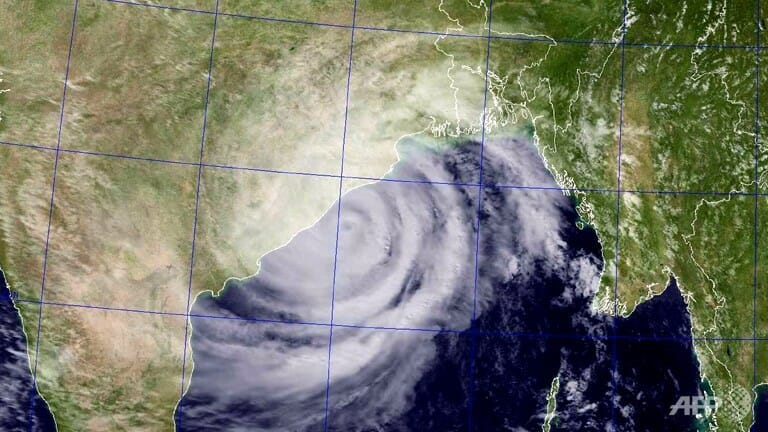
A powerful cyclone, with 130 mph winds, hit the Bay of Bengal on the east coast of India Saturday.
Tropical Cyclone Phailin, the equivalent of a category 4 hurricane, is the most powerful cyclone to hit India in 14 years. In 1999, Cyclone Odisha killed 10,000 people. As a result, almost a million people were forcibly evacuated this time, bused from their communities to government shelters. There was massive devastation to the surrounding area, but the casualties and death toll were successfully limited. At least seven have been reported killed.
According to CNN,
New Delhi, India (CNN) — Hours after it snapped power lines, overturned cars and ripped away bamboo homes, the most powerful cyclone to hit India in years weakened Sunday, but not before it left at least seven dead.
Morning light revealed damage from Tropical Cyclone Phailin after it pounded the eastern coast, the strongest storm in India in 14 years.
Debris littered wet streets; gaping holes replaced roofs and windows in buildings.
At least seven deaths were confirmed, said Prabhat Mohapatra, a special relief commissioner in Odisha state, where the cyclone landed.
Massive evacuation efforts helped limit the number of casualties, officials said.
“Ganjam is the worst affected district with massive destruction,” said Kamal Lochan Mishra, a state disaster management official. “Our first priority is to clear the roads and we expect all the roads across districts to be cleared by noon.”
Like a fierce hurricane
Hurricanes are known as cyclones in the Indian Ocean.
At 140 mph wind speed, Phailin made landfall the equivalent to a Category 4 hurricane. The strongest hurricane is a Category 5, which comes with winds greater than 155 mph. …
‘Zero-casualty approach’
India evacuated nearly a million people before the storm to avoid a repeat of what happened in 1999, when a cyclone killed 10,000 people.
“We have taken a zero-casualty approach,” said Kamal Lochan Mishra, the Odisha state disaster manager. “If people do not move, force will be used to evacuate them.”
